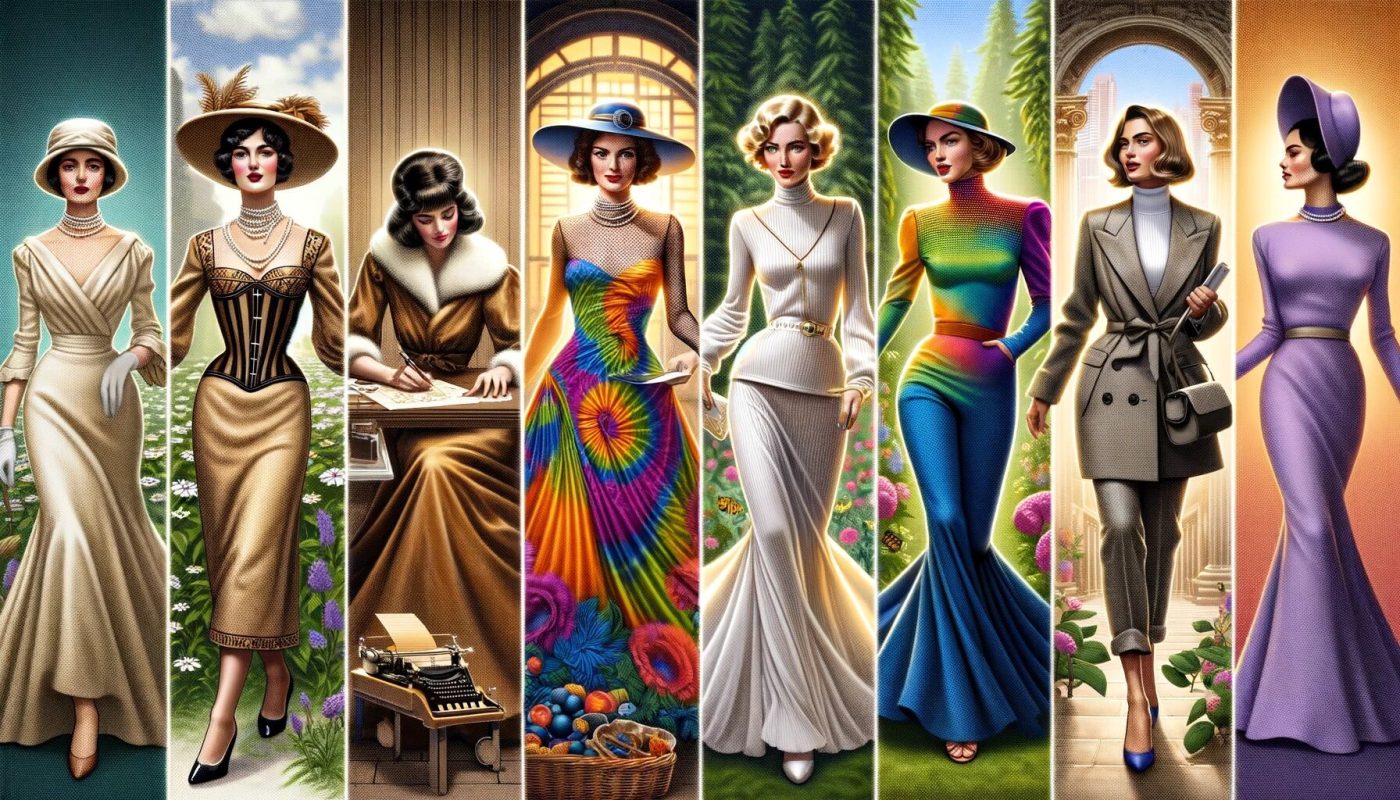Fashion has always been a reflection of society, culture, and individual expression, and women’s dresses stand at the forefront of this artistic and sartorial evolution. From ancient civilizations to modern runways, the journey of women’s dresses spans millennia, showcasing changes in style, fabric, silhouette, and societal norms.
This article delves into the rich tapestry of women’s dress history, exploring how dresses have evolved from functional garments to symbols of fashion and identity.
Early Civilizations: The Origins of Women’s Dresses
The story of women’s dresses begins in the ancient world, where civilizations like Egypt, Mesopotamia, and Greece laid the foundations for clothing as we know it today. In ancient Egypt, women wore linen garments that draped elegantly, reflecting the hot climate and the importance of modesty. Mesopotamian women donned draped garments as well, often made from wool or linen, adorned with intricate embroidery and jewelry as symbols of status and beauty. Meanwhile, ancient Greek women wore the peplos and chiton, loose-fitting garments held at the shoulders by pins or fibulae, emphasizing grace and simplicity.
Medieval Elegance: Dresses in the Middle Ages
During the Middle Ages, Europe saw the emergence of more structured and layered dresses for women that reflected the hierarchical society of the time. Women’s dresses consisted of layers of tunics, gowns, and cloaks, often made from wool or linen and embellished with fur, embroidery, and jewels. The silhouette was defined by long, flowing lines, with styles varying based on region and social class. Noblewomen wore elaborate gowns with fitted bodices and voluminous skirts, while peasants wore simpler garments for practicality.
Renaissance Rebirth: Art, Culture, and Fashion
The Renaissance brought a revival of classical art and culture, influencing women’s dress styles across Europe. Italian Renaissance fashion saw the rise of the iconic “gowns” with fitted bodices, low necklines, and voluminous skirts supported by hoop skirts or farthingales. Fabrics like silk and velvet were favored among the elite, adorned with intricate embroidery and lace. In Northern Europe, women wore more modest dresses with high necklines and structured sleeves, reflecting regional and religious influences.
The Age of Enlightenment: Rationality and Reform in Dress
The 18th century marked a shift towards more refined and rational dress styles influenced by the Age of Enlightenment. Women’s dresses evolved into lighter, more fluid silhouettes, characterized by the robe à la française and later the robe à l’anglaise. These dresses featured wide skirts supported by panniers or hoop petticoats, with fitted bodices and elaborate decoration. Fabrics such as silk, satin, and brocade were embellished with intricate embroidery, ribbons, and lace, showcasing craftsmanship and luxury.
Regency Elegance: Empire Waist and Neoclassical Influence
In the early 19th century, the Regency era brought a departure from the opulence of the previous century towards simpler, more flowing dresses inspired by classical antiquity. Women’s dresses featured high empire waistlines, emphasizing a natural, draped silhouette that complemented the neoclassical ideals of grace and simplicity. Muslin became a popular fabric choice for its lightness and drape, often adorned with delicate embroidery or sprigging.
Victorian Splendor: The Height of Fashion and Modesty
The Victorian era ushered in an era of elaborate dresses that emphasized modesty, femininity, and social status. Women’s dresses featured full skirts supported by crinolines or bustles, with bodices tailored to accentuate a tiny waist. Sleeves ranged from voluminous to fitted, reflecting changing tastes and societal norms. Fabrics such as silk, satin, and velvet were intricately decorated with lace, ribbons, and beading, signaling wealth and social standing. Victorian fashion also saw the rise of specialized dressmakers and fashion plates, influencing trends across Europe and America.
The Roaring Twenties: Flappers and Modernity
The 1920s marked a revolutionary period in women’s fashion, with dresses that embodied the spirit of the Jazz Age and the liberation of women. The iconic flapper dress emerged, characterized by its loose, straight silhouette, dropped waistline, and shorter hemline that scandalously revealed the legs. Fabrics like chiffon and silk were favored for their lightness and movement, adorned with beadwork, fringe, and Art Deco motifs. The flapper dress symbolized a break from tradition, embracing modernity, freedom, and a new era of women’s independence and self-expression.
Mid-Century Modern: The Golden Age of Couture
The mid-20th century saw a return to elegance and glamour in women’s dresses, influenced by Hollywood stars and haute couture designers. The 1950s were defined by full-skirted dresses with nipped-in waists, epitomized by Dior’s New Look silhouette. Women embraced femininity with dresses made from luxurious fabrics like taffeta, organza, and silk, often embellished with floral prints, bows, and ruffles. The cocktail dress became a staple for evening wear, offering sophistication and allure.
Swinging Sixties: Youth Culture and Revolution in Fashion
The 1960s brought a cultural revolution that transformed women’s dresses into symbols of youthful rebellion and individuality. The minidress emerged as a daring fashion statement, challenging traditional hemlines and embracing freedom of movement. Designers like Mary Quant and André Courrèges popularized geometric shapes, bold colors, and innovative fabrics such as PVC and polyester. The shift dress became a symbol of mod style, characterized by its straight, sleeveless silhouette and minimalist design.
Bohemian Chic: Counterculture and Hippie Movement
In the late 1960s and early 1970s, the hippie movement inspired a bohemian aesthetic in women’s dresses characterized by free-spiritedness and cultural diversity. Dresses featured flowing, loose-fitting silhouettes made from natural fibers like cotton and hemp, often adorned with ethnic prints, tie-dye, and embroidery. The maxi dress became synonymous with boho chic, offering comfort and versatility for women embracing a lifestyle of peace, love, and individuality.
Contemporary Trends: Diversity and Global Influence
Today, women’s dresses encompass a wide range of styles that reflect global influences, cultural diversity, and individual expression. Contemporary fashion is characterized by fluidity and inclusivity, with designers drawing inspiration from diverse cultures, art movements, and subcultures. Women can choose from minimalist sheath dresses, romantic floral maxis, tailored jumpsuits, avant-garde designs, and sustainable fashion choices that prioritize ethical production and environmental stewardship.
Conclusion: Celebrating Diversity in Women’s Dress Evolution
The evolution of women’s dresses is a testament to the ever-changing landscape of fashion, culture, and societal norms. From ancient civilizations to modern runways, dresses have transcended mere clothing to become powerful symbols of identity, status, and self-expression. Each era has contributed to the rich tapestry of dress history, shaping trends, challenging conventions, and reflecting the aspirations and values of women throughout history. As we continue to embrace diversity and celebrate individuality in fashion, women’s dresses remain a timeless canvas for creativity, innovation, and the enduring spirit of femininity.

